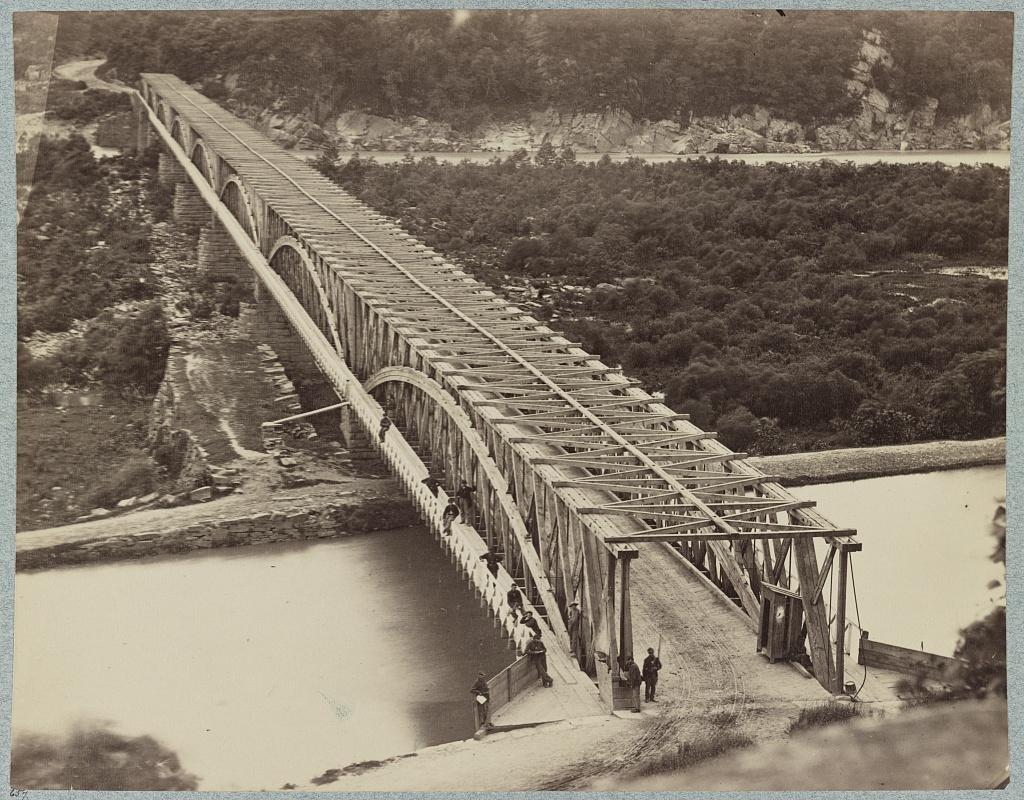Chain Bridge

Chain Bridge has witnessed some interesting history.
In 1797, the first bridge over the Potomac River was built by Georgetown merchants to compete with the Virginia port of Alexandria. The Falls Bridge allowed trade from the "upper country" of Virginia to move directly to Georgetown over the Georgetown-Leesburg Road. After floods destroyed the first two bridges, a chain suspension bridge, considered a marvel of engineering with a span of 128 feet between stone towers, was built in 1808. Although this bridge has been replaced by other forms of construction, the popular name Chain Bridge continues to be used. The present bridge was built following the flood of 1936.
Chain Bridge has witnessed some interesting history. On August 24, 1814, as British forces were burning the Capital and the White House, Stephen Pleasanton, a government auditor, fled across the bridge to the Virginia countryside. He had with him for safekeeping government books and valuable papers, including the Declaration of Independence.
During the Civil War, Union troops were stationed on both ends of Chain Bridge to guard the structure in case of a Confederate attack. The "Sleeping Sentinel" is a famous story regarding one of those soldiers, William Scott. He was sentenced to death by firing squad after being found guilty of falling asleep at his post guarding the Chain Bridge in the summer of 1861. As legend has it, President Lincoln was so moved by the story he raced to the execution to deliver an executive reprieve for Private Scott.
Another Civil War story associated with Chain Bridge is about Thaddeus S.C. Lowe, the first to use a balloon for military purposes. Lowe initially had to inflate his balloon in the City, the only source of gas, and tow it to the sites where he would ascend to view the opposing lines.
During one of his trips from the City to an outpost in Virginia, he arrived at the Washington end of Chain Bridge with his balloon to find the bridge filled with troops and artillery. Unable to secure a place in the lines moving across the bridge, he directed the moving of the balloon by having his men climb up onto the overhead truss-works and make their way across the eighteen-inch wide stringers towing the balloon with the troops on the bridge below them and the river far below that.
In 1926, the question of a public water supply system for Arlington County was examined; the decision was to buy from the existing District of Columbia
waterworks. In the spring of 1927, construction was eventually drawn from the Dalecarlia Filter Plant in the District. It supplied water to a 1.5 million gallon reservoir and 260,000-gallon water tower near Old Dominion Drive and 24th Street North. The first public water in Arlington was transported in a large water main that crossed the river under the Chain Bridge.
The eighth and present version of the bridge is a continuous steel girder structure, completed in 1938 on piers dating from the 1870s. In 1982, the bridge was significantly overhauled. The overhaul widened the three 10-foot wide lanes with a 12-foot wide one and two 11-foot ones. It also replaced a set of stairs from the bridge to the C&O Trail with a ramp, removed the sidewalk on the downstream side, added a crash barrier between the sidewalk and roadway, replaced the old railing with a fence, and replaced heavy concrete with a lighter type that allowed the bridge to hold more weight.
Images





